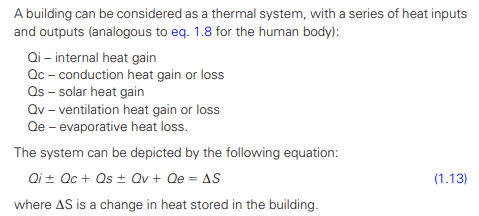Heat Balance of a Thermal Zone
I'm a new EnergyPlus modeller, and I am analysing the hourly and annual heat balances in different components/levels inside my single room model (6 surfaces 4 windows). I have analysed, explored and widely understood the following heat balances Zone Air Heat Balance, Surface Inside, Sub-Surface/Windows.
Then, I was expecting that the heat balance of the sum of all zone Surface Inside Face Conduction Heat Transfer Rate, Zone Windows Total Transmitted Solar Radiation Rate and Zone Total Internal Radiant Heating Rate would be equal to zero. The difference is significant, and I would like to have some feedback on what heat flows I am missing, please.
I acknowledge that this ignores the interaction of Surface Inside Face Net Surface Thermal Radiation between surfaces/windows.
Thanks in Advance






@Vasco Zeferina Do you use any mechanical system? How about infiltration?